Dokumenta X - in Kassel. A personal review, slightly polemical


 |
This year, for the 10th time (and for the last time in this millenium) the
Dokumenta takes placae, the biggest art-show on earth, as they say. For the first time, the exhibition is curated by a woman: Catherine David.
There were two topics from which Catherine David had to choose (as I read in the introduction): while making no concession to the commemorative trend, the last documenta of this century can hardly evade the task of elaborating a historical and critical gaze on its own history,...... and At a time when advertising, televosion, the new media, and the digital sophistication of virtual worlds are "swallowing the real in its spectacular representation (Gruzinski), it seems particularly appropriate to foreground the processes of analysis and distancing. |
dokumenta X is not intended as a mere art-exhibition: there is a discussion-forum «100 days - 100 guests», a series of film-presentations, theatre-performances, a hybrid work space and more.
 |
These offers are hermetically closed to visitors, who are not lucky enough (?) to live in Kassel or nearby. For them, dokumenta is reduced to the parcours from the Kulturbahnhof to the exhibition halls and the Orangerie. For them, dokumentastill is a museal affair. |
I heard many negative or mostly negative opinions about the actual concept and I didn't want to rely on them.
Women in influential, exposed functions also provoke chauvinistic ressentiments. And remembering Jan Hoet's media-hype at documenta IX, I found it completely ok that Catherine David restrained herself strongly in public. |
 |
I started the parcours with an open mind, but I got more and more angry and grim from station to station.
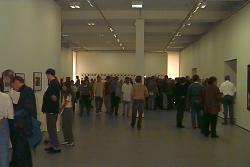 |
The audience pushed its way through the halls, on search of orientation:
a lot of small pictures hang along the walls endlessly and very often I had the impression to walk along the corridors of a public academy: everywhere I got instructions, I was confronted to pseudo-scientific researches or introduced to architectural projects in different parts of the world. |
Why Hans Hacke does the homeworks of a student of urbanistic science or sociolgy by documentating the criminal gentrification of a New York ghetto?
 |
Why do they documentate Walter de Maria's 'Vertical Earth Kilometer', when you can step on it just outside of the building? |
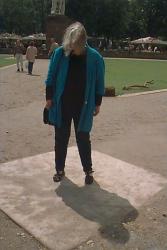 |
There I can feel the vulnerability of the earth, I realize that there is long metal stick, 1000 meters deep in the ground. That is Reality....
The artists try to work scientifically, but his domain has no methods for this - thus he invents new methods or uses scientific methods amateurishly. This gets obvious here. |
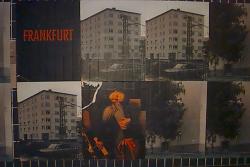 |
I understood that documenta was intended to documentate the vanishing of art; but with the rejection of spectacular art - marketing the art is rejected as well. Media comes to power: monitors everywhere but nearly any pictures left
(Back to the pictures. Towards the film. Together with Sony), only few installations are left, performances seem to be forbidden, no live anymore. Suzanne Lafont's fotos of the houses of immigrants disappear from the walls of pedestrian passageway, they dissolve amidst posters and advertising. |
Leftovers from artist's workshops in the 60ies and 70ies are shown in the Kulturbahnhof, hidden between monitors with ways the same video-car-rides (where it Moscow, Senegal or Jerusalem - these cameras, mounted at the driving wheel - that is trivial and not interesting.
The Monitorisation of Art - the observer is downgraded to a piece of inventory; the visitor, plugged into the installation, stares around him, and in search of sense.
Globalization works, tools are cheap - everybody can buy or lease a video-camera nowadays, and then he comes to the conclusion that unsharp and vibration pictures are something special.
I can't stand it anymore!
I am longing for Ulrike Rosenbach's or Klaus vom Bruch's Video-Kunst.
Art also disappeares when art-produces don't take their work seriously anymore and when they think it is enough to press the record-button. | 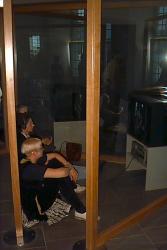 |
Is there an additional sense when the guide-book tells me, that the video-ride goes through a very sensible political region - a part of Jerusalem where violence happens very often? What's so special on this video - cars drive there all the time, this doesn't change the history (unless there is a bomb in the car, but that's no art, either!)
But I want to name some artists, which should not be missed, because some treasures could be found between the cables and the instruction tables:
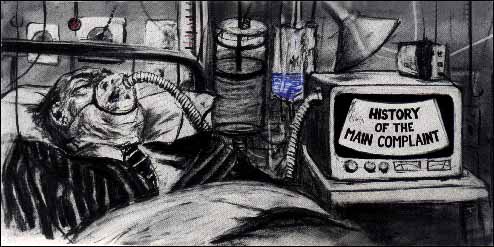
William Kentridge (South Africa) presented the film History of the Main Complaint; a film which by very econimical means creates an extraordinary intense and depressing athmosphere. I think I will not forget these images very easily.
Nancy Spero's works, a mixture of painting, drawing, collage, mechanical pictures and texts are difficult to find: hanged along the wall of a big exhibition hall in a very unspectacular way, I was confronted with images, which showed violence, male power and war from a feminist perspective, images which burnt into memory.
Some critics titulated this
documenta a public academy, other called it an inventory of artist's copies, I miss the Bilder-Lust:
everything is so dead and without humour, no joy, no ironical distancing, everything very seriously and teacher - like: Catherine David met the german characterly exactly!
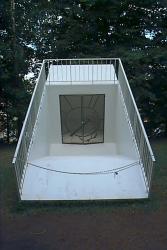 At the end of the parcours, at the Orangerie, two very didactic installations are to be found:
At the end of the parcours, at the Orangerie, two very didactic installations are to be found:
Pawel Althamer places an old polish man in a circus car amidst a lot of objects. I cannot stand to citate form the short guide:
.. His strange yet somehow normal presence forces the viewer to redefine this person and its function. To do so means paying attention to him he usually does not get...
I found this so cynic, that I didn't view at the old man. The pig-house (by Rosemarie Trockel and Carsten Höller) caught his intended aim: it really has a conciousness-changing effect:
I got so angry at least that I interpreted Kippenberger's metro-entrance as the entrance to the Hades.
I am sure I will visit documenta one more time and I would like to revise my opinion on this exhibition, a second glance offers a second chance.
But, I am grateful to documenta: I had the chance to admire the wonderful installation Ort-Raum Götternacht byKazuo Katase in the Kunstverein Kassel.
 |
And now let's finish with the documenta for this time. The evening sun in the mountains around brought back some peace. 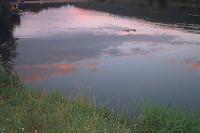
|
|
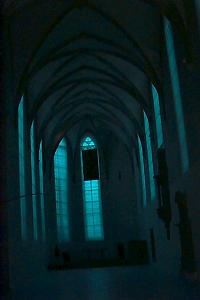
Ort-Raum Götternacht by Kazuo Katase |
But there is one aspect which must be named here: the Internet-Mania of this art-show inspired me to open the av@ntart-Art - Award . I ask for intensive cooperation!
back
This Site's URL: http://www.avantart.com







 At the end of the parcours, at the Orangerie, two very didactic installations are to be found:
At the end of the parcours, at the Orangerie, two very didactic installations are to be found:

